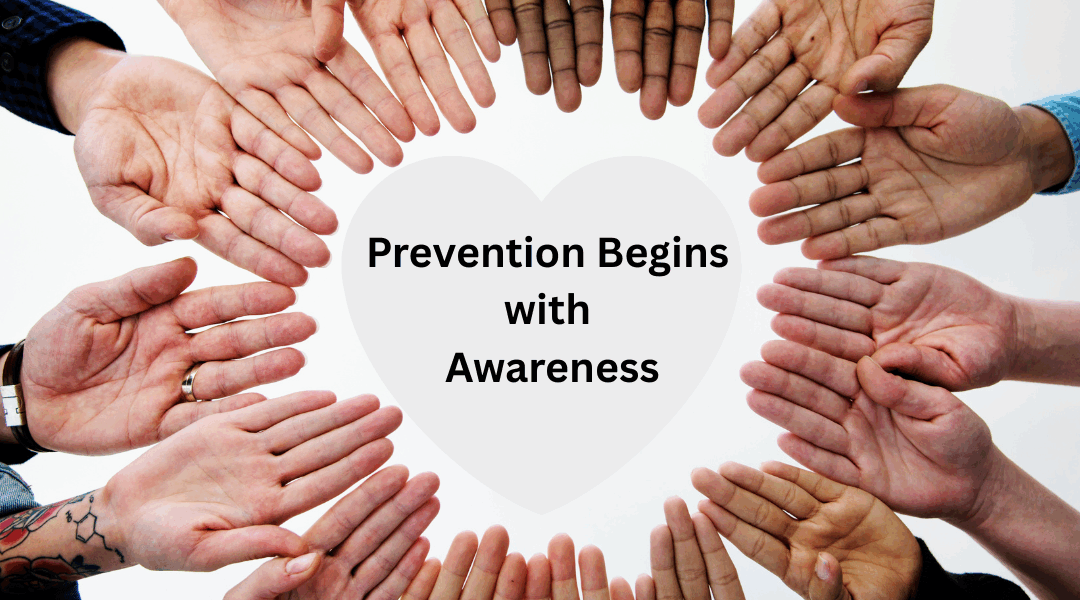Leslie Rice—GHC Volunteer Staff Writer
Fast Facts
In 2023, the overall U.S. age-adjusted suicide rate was 14.1 per 100,000. Rates were highest among
American Indian/Alaska Native (AI/AN) non-Hispanic, followed by White non-Hispanic and Native Hawaiian/Pacific Islander groups. (CDC, 2025). CDC
Males die by suicide nearly 4× as often as females; male rates peak in older adulthood (75+). (NIMH, 2025). National Institute of Mental Health
2022 marked the highest number of U.S. suicide deaths recorded (49,449), with an age-adjusted rate of 14.3. (NCHS/CDC, 2023). CDC
From 2018–2023, increases were largest among Black and Hispanic populations; White rates slightly declined. (CDC, 2025). CDC
Warning signs
(by demographic)
These signs always warrant immediate attention. If danger feels imminent, call 911 and state “psychiatric emergency,” or contact 988.
General (all ages): talking about wanting to die; searching for means; hopelessness; feeling trapped; unbearable pain; withdrawing; rage; extreme mood changes; increased substance use. (AFSP, 2024; CDC, 2024). AFSP+1
Teens & young adults: sudden drop in grades or activities; bullying/cyberbullying; breakup/family conflict; identity-based harassment; access to firearms; posting goodbyes online. LGBTQ+ youth face added risk when exposed to rejection or discrimination. (Trevor Project, 2021; NYC Health, n.d.; NIMH, 2023). The Trevor Project+2New York City Government+2
Middle-aged adults (25–64): job/financial loss, legal stress, relationship dissolution, chronic pain, substance use. (CDC, 2024). CDC
Older adults (65+): recent bereavement, isolation/loneliness, major health decline, giving away possessions, sudden calm after agitation. (NIMH, 2025; CDC, 2024). National Institute of Mental Health+1
Veterans: sleep changes, hypervigilance, moral injury, increased substance use, withdrawing from unit/family. (U.S. Dept. of Veterans Affairs, n.d.). mentalhealth.va.gov
AI/AN communities: historical trauma, limited access to culturally-centered care, community-level stressors; community protective factors (language/culture, connectedness) are vital. (CDC, 2023; 2025). CDC+1
What individuals can do
Evidence-based steps
Ask directly and listen without judgment (“Are you thinking about suicide?”). It does not plant the idea. (AFSP, 2024). AFSP
Reduce access to lethal means (e.g.,safestorage of firearms/medications). (CDC, 2024). CDC
Stay with the person and help connect to immediate support: 988 (text/call/chat), primary care/therapist, or local behavioral health urgent care. (Cone Health, n.d.). Cone Health
Follow up within 24–48 hours; continuing contact reduces risk. (CDC, 2024). CDC
What communities can do
Normalize help-seeking (post 988 info, culturally relevant outreach, faith/community partnerships). (CDC, 2024). CDC
Train gatekeepers (teachers, coaches, clergy, employers) to spot warning signs and act. (CDC, 2024; AFSP, 2024). CDC+1
Invest in protective conditions: housing stability, insurance coverage, broadband access for telehealth, safe social spaces for youth and LGBTQ+ people. (CDC Vital Signs, 2024). CDC
Partner with culturally specific providers and peer-led groups; integrate traditional healing and language programs where appropriate. (CDC, 2023; 2025). CDC+1
Referral resources
Greensboro & beyond
Immediate / 24-7
988 Suicide & Crisis Lifeline — call/text 988 or chat (all ages). (CDC overview). CDC
Veterans Crisis Line — 988, press 1; text 838255. (VA). veteranscrisisline.net
Trevor Project (LGBTQ+ youth) — 24/7 text, chat, phone. (Trevor). Note: the federal 988 LGBTQ option has been discontinued; Trevor remains active. The Trevor Project+1
Greensboro / Guilford County
Guilford County Behavioral Health Center (Behavioral Health Urgent Care, ages 4+) — walk-in/urgent support for mental health and substance use. Guilford County
Cone Health Behavioral Health — inpatient/outpatient behavioral health; check site for locations and access steps. Cone Health
NC Mobile Crisis (Guilford) — 24/7 mobile crisis response; statewide access number 866-275-9552 (use ZIP code lookup if needed). NC DHHS
NAMI Guilford — family and peer education/support; local crisis guidance. NAMI Guilford
National information & training
CDC Suicide Prevention — risk/protective factors; community strategies. CDC+1
AFSP — warning signs, local chapters, trainings. AFSP+1
NIMH — statistics and research updates. National Institute of Mental Health

Worried about someone?
-
- Ask directly
- Stay with them
- Remove lethal means.
- Call/text 988.
Local help now:
Guilford County Behavioral Health Center (Behavioral Health Urgent Care), NC Mobile Crisis 866-275-9552
988 Suicide & Crisis Lifeline — call/text 988 or chat (all ages)
Veterans Crisis Line — 988, press 1; text 838255. (VA)
Trevor Project (LGBTQ+ youth) — 24/7 text, chat, phone.
-
- Note: the federal 988 LGBTQ option has been discontinued; Trevor remains active.
References
Centers for Disease Control and Prevention. (2024). Risk and protective factors for suicide. https://www.cdc.gov/suicide/risk-factors/ CDC
Centers for Disease Control and Prevention. (2024). Preventing suicide. https://www.cdc.gov/suicide/prevention/ CDC
Centers for Disease Control and Prevention. (2025). Notes from the field: Differences in suicide rates, by race and ethnicity, 2018–2023. MMWR, 74(35). https://www.cdc.gov/mmwr/volumes/74/wr/mm7435a2.htm CDC
National Center for Health Statistics. (2023). Provisional numbers and rates of suicide by month and sex: United States, 2021–2022 (VSRR No. 034). https://www.cdc.gov/nchs/data/vsrr/vsrr034.pdf CDC
National Institute of Mental Health. (2025). Suicide—statistics. https://www.nimh.nih.gov/health/statistics/suicide National Institute of Mental Health
National Institute of Mental Health. (2023). Youth suicide rates increased during the COVID-19 pandemic. https://www.nimh.nih.gov/news/science-updates/2023/youth-suicide-rates-increased-during-the-covid-19-pandemic National Institute of Mental Health
American Foundation for Suicide Prevention. (2024). Risk factors, protective factors, and warning signs. https://afsp.org/risk-factors-protective-factors-and-warning-signs/ AFSP
New York City Department of Health and Mental Hygiene. (n.d.). LGBTQ youth and suicide. https://www.nyc.gov/site/doh/health/health-topics/lgbtq-youth-suicide.page New York City Government
U.S. Department of Veterans Affairs. (n.d.). Suicide prevention. https://www.mentalhealth.va.gov/suicide_prevention/ mentalhealth.va.gov
The Trevor Project. (2021). Warning signs of suicide. https://www.thetrevorproject.org/resources/article/warning-signs-of-suicide/ The Trevor Project
Cone Health. (n.d.). Behavioral health resources. https://www.conehealth.com/services/behavioral-health/resources/ Cone Health
Guilford County. (n.d.). Behavioral Health Center. https://www.guilfordcountync.gov/government/departments-and-agencies/department-health-and-human-services/mental-and-behavioral-health-care-services/behavioral-health-care-center Guilford County
Disclaimer: The information shared in Greensboro Holistic Collective posts is intended for educational and informational purposes only. It is not a substitute for professional medical, mental health, or legal advice, diagnosis, or treatment. Always seek the guidance of a qualified healthcare provider or professional with any questions you may have regarding your health, well-being, or specific situation. Never disregard or delay seeking professional advice because of information you read here. Greensboro Holistic Collective does not endorse any specific practitioners, services, or products mentioned, and participation in any activities is at your own discretion.
Join Our Community Newsletter
Local events, wellness insights, and offerings—occasional, thoughtful, spam-free.
We respect your privacy. Privacy Policy

